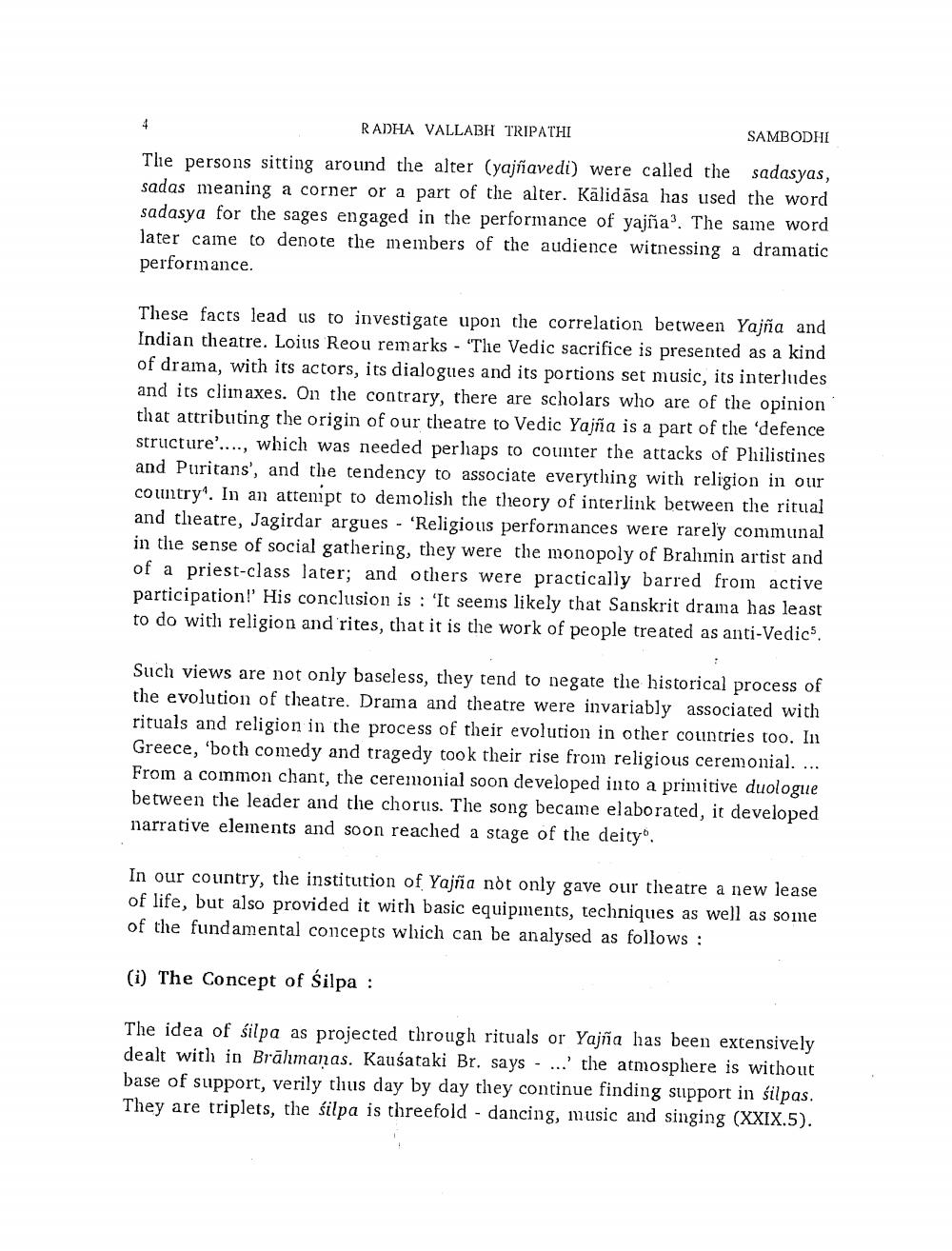Book Title: Sambodhi 1994 Vol 19 Author(s): Jitendra B Shah, N M Kansara Publisher: L D Indology Ahmedabad View full book textPage 8
________________ RADHA VALLABH TRIPATHI SAMBODHI The persons sitting around the alter (yajavedi) were called the sadasyas, sadas meaning a corner or a part of the alter. Kalidasa has used the word sadasya for the sages engaged in the performance of yajña'. The same word later came to denote the members of the audience witnessing a dramatic performance. 4 These facts lead us to investigate upon the correlation between Yajña and Indian theatre. Loius Reou remarks - "The Vedic sacrifice is presented as a kind of drama, with its actors, its dialogues and its portions set music, its interludes and its climaxes. On the contrary, there are scholars who are of the opinion that attributing the origin of our theatre to Vedic Yajña is a part of the 'defence structure...., which was needed perhaps to counter the attacks of Philistines and Puritans', and the tendency to associate everything with religion in our country. In an attenipt to demolish the theory of interlink between the ritual and theatre, Jagirdar argues 'Religious performances were rarely communal in the sense of social gathering, they were the monopoly of Brahmin artist and of a priest-class later; and others were practically barred from active participation!" His conclusion is: 'It seems likely that Sanskrit drama has least to do with religion and rites, that it is the work of people treated as anti-Vedic3. Such views are not only baseless, they tend to negate the historical process of the evolution of theatre. Drama and theatre were invariably associated with rituals and religion in the process of their evolution in other countries too. In Greece, both comedy and tragedy took their rise from religious ceremonial. From a common chant, the ceremonial soon developed into a primitive duologue between the leader and the chorus. The song became elaborated, it developed narrative elements and soon reached a stage of the deity. In our country, the institution of Yajna not only gave our theatre a new lease of life, but also provided it with basic equipments, techniques as well as some of the fundamental concepts which can be analysed as follows: (i) The Concept of Silpa: The idea of silpa as projected through rituals or Yajña has been extensively dealt with in Brāhmaṇas. Kausataki Br. says ... the atmosphere is without base of support, verily thus day by day they continue finding support in silpas. They are triplets, the filpa is threefold dancing, music and singing (XXIX.5).Page Navigation
1 ... 6 7 8 9 10 11 12 13 14 15 16 17 18 19 20 21 22 23 24 25 26 27 28 29 30 31 32 33 34 35 36 37 38 39 40 41 42 43 44 45 46 47 48 49 50 51 52 53 54 55 56 57 58 59 60 61 62 63 64 65 66 67 68 69 70 71 72 73 74 75 76 77 78 79 80 81 82 ... 182
